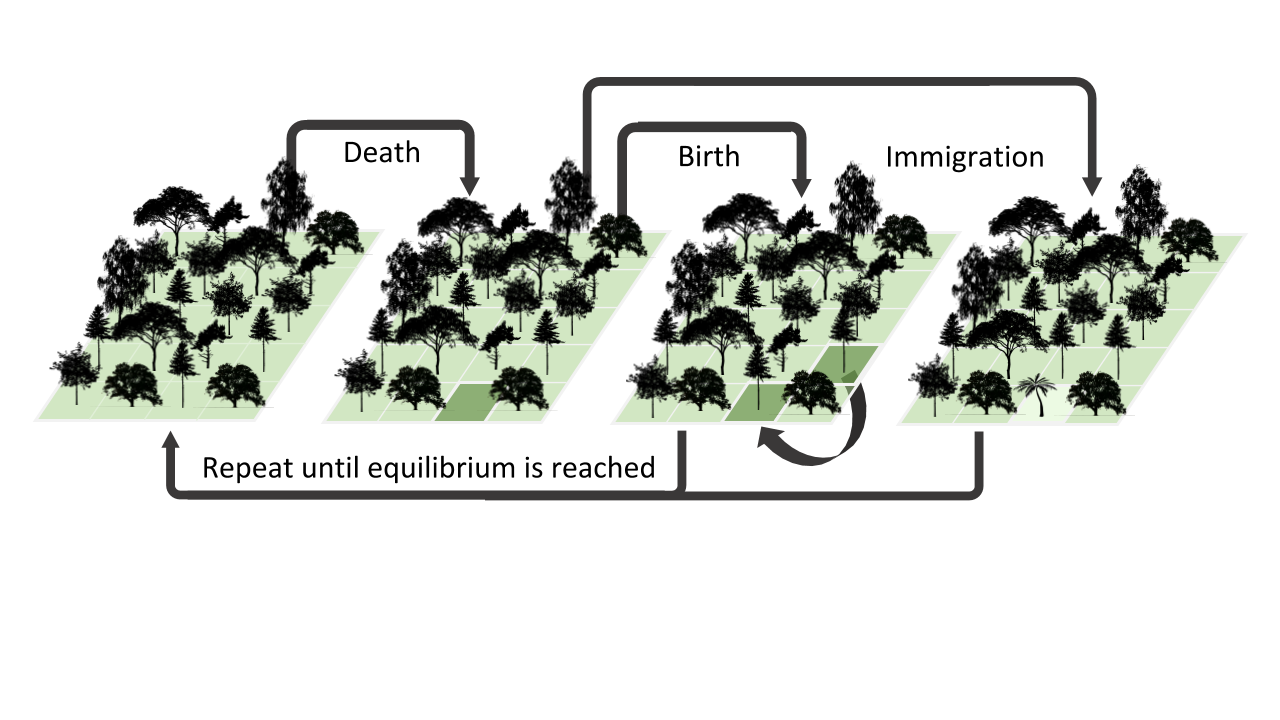8 Introduction to the MESS Model
8.1 Key questions
- What is the MESS Model?
- How does MESS differ from other biodiversity models?
- What are some example applications of MESS?
- Where can I get a cool MESS logo sticker?
8.2 Lesson objectives
After this lesson, learners should be able to…
- Describe the (high-level) concept for MESS.
- Situate MESS in the wider process modeling state space.
- Formulate scientific questions and decide if/how MESS can be used to explore them.
8.3 Planned exercises
8.3.1 Process-based modeling with the Massive Eco-evolutionary Synthesis Simulations (MESS) Model

8.3.2 Overview of MESS simulation and analysis workflow
The basic steps of MESS model simulation-based machine learning inference are as follows:
- Step 1 - Set model parameters based on prior knowledge of empirical system
- Step 2 - Run many, many simulations
- Step 3 - Use ML to infer community assembly process (neutral/competition/filtering)
- Setp 4 - Use ML to estimate key community assembly parameters
- Step 5 - ???
- Step 6 - Profit!!
8.4 Key points
- MESS is a process-based model in the direct lineage of Island Biogeograpy Theory and Neutral Biodiversity Theory.
- MESS models the 4 fundamental biodiversity processes: dispersal, speciation, selection, and drift.
- MESS generates joint predictions of multiple biodiversity patterns: abundances, trait values, genetic diversities, and phylogenies.